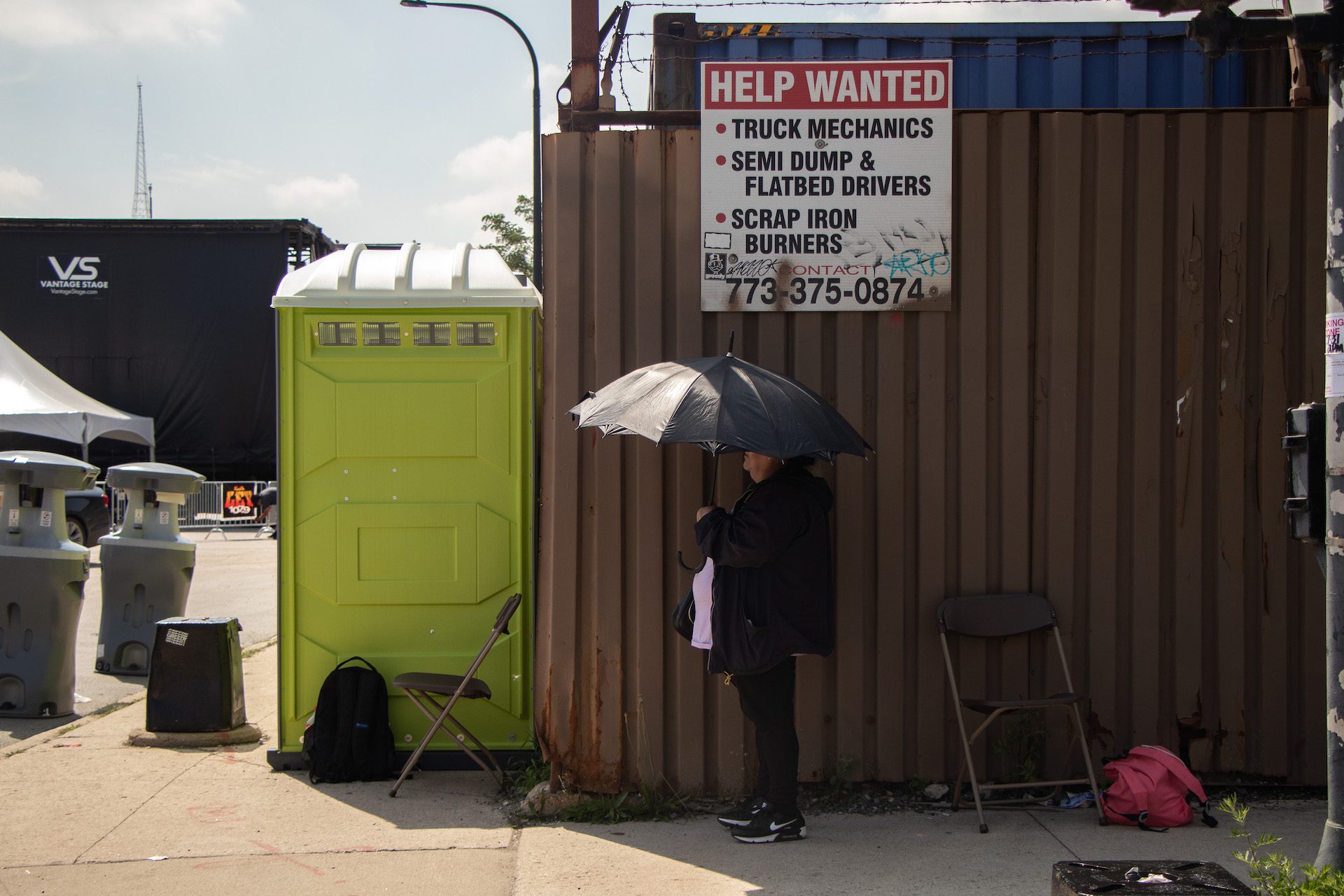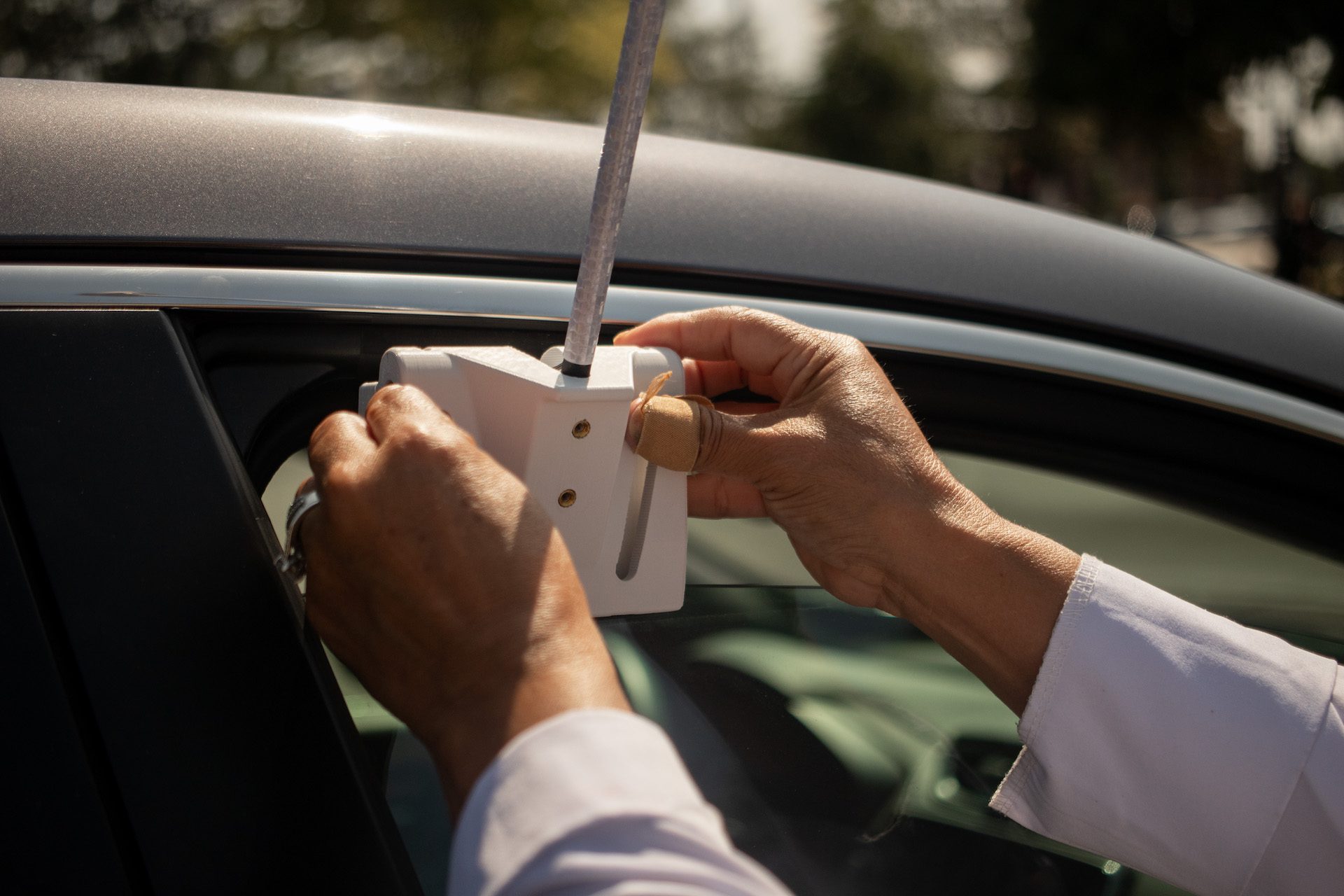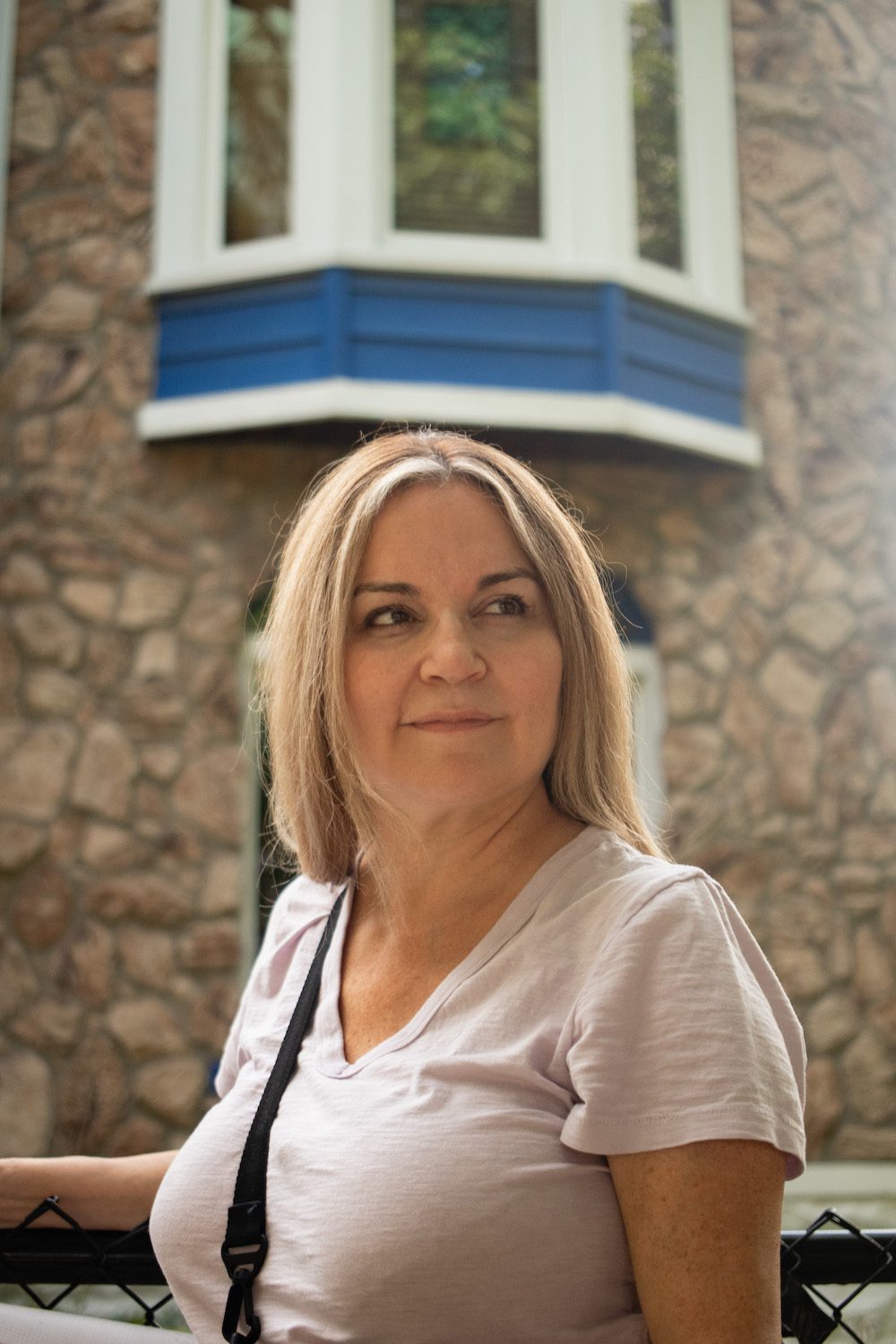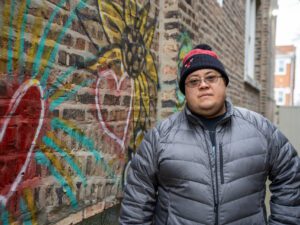 Oscar Gomez for Borderless Magazine
Oscar Gomez for Borderless MagazineThe heat mapping study, dubbed Heat Watch Chicago, showed that neighborhoods on the city’s South Side were the hottest and residents there were the most vulnerable to extreme weather.
,
For three sweltering weeks last August, Em Ayala and her two-year-old son were confined to one room of their second-floor apartment in the East Side neighborhood of Chicago near the Illinois-Indiana border. The century-old bungalow they rent wasn’t providing adequate ventilation, while their lone window air conditioning unit only reached so far.
Want to receive stories like this in your inbox every week?
Sign up for our free newsletter.

“It was a pretty insane, eye-opening situation,” said Ayala, whose son has special needs and was severely distressed by the heat. “It’s a physical danger, but now the heat’s affecting the psyche.”
Ayala, who is Mexican American, works as a program manager at the Southeast Environmental Task Force. Her coworkers recognized her family’s vulnerability to extreme heat. They offered her cooler spaces like their homes and the organization’s office, provided an additional A/C unit and asked specifically what she and her baby needed.
Due to climate change, Ayala’s heat experience is becoming more common and frequent among Chicago residents. But the challenges of climate change are unevenly distributed across the city, affecting some neighborhoods and groups more than others, including new immigrants, according to a mobile monitoring heat study released in December. The study, dubbed Heat Watch Chicago, was a public-private partnership that used a team of resident scientists to measure temperatures in communities last summer.
Heat Watch Results Confirm Residents’ Intuitions
On July 28, nearly 100 Heat Watch Chicago volunteers tracked outdoor temperatures and humidity in the morning, afternoon and evening on designated routes throughout the city. The Southeast Environmental Task Force and other community groups helped create the routes and served as community hubs for volunteers.

The results showed a maximum temperature difference of 22 degrees Fahrenheit across the city at one time, with gaps widening from morning to afternoon. Neighborhoods on the city’s South Side were the hottest, with some areas averaging nearly 12 degrees hotter throughout the day than their cooler counterparts.
“It’s a reaffirmation of what we already knew,” said Ayala, “that some communities — more ethnic, lower income, Black and Brown — are more heavily impacted by drastic temperature changes.”
Chicago’s Department of Public Health led the study as part of a National Oceanic and Atmospheric Administration program, supported by CAPA strategies and the National Integrated Heat Health Information System, funding similar initiatives in other cities. Northwestern University’s Buffett Institute for Global Affairs also provided funding. The one-day event provided data that had only been modeled previously using satellite readings of surface temperatures combined with ground-level air temperatures taken at the National Weather Service’s two collection points at O’Hare and Midway Airports.
“It’s filling in data that hadn’t been as detailed before,” said Raed Mansour, Director of Innovation at CDPH. The project was also an opportunity to raise awareness with residents and community partners, Mansour added, about the health and economic burdens of extreme heat.
Building a Heat Vulnerability Index
Heat Watch Chicago kicks off a more significant effort to develop a city-wide heat vulnerability index. The Defusing Disasters working group at Northwestern University will combine the July results with data on other factors affecting how well people adapt to heat, including age, chronic diseases, income, social networks, access to health care, air conditioning, and cooling centers. The group will also bring historic public health data on excess deaths, hospitalizations, and ambulance calls during extreme heat to visualize which groups and areas across the city are most vulnerable.
Read More of Our Coverage
Community input will be key, said Terry Horton, the Defusing Disasters community engagement lead. The group is seeking Chicagoans to join an advisory team by Jan. 31 to provide lived experiences, help decide how to weigh various factors in the model and point out what the data scientists may be missing. Defusing Disasters co-chair Daniel Horton said the group will meet monthly to produce a heat vulnerability index (HVI) by the summer.
Other cities, including New York and Phoenix, already use heat vulnerability tools to help residents access hyper-local conditions and resources during extreme heat. Chicago’s HVI could be used to prioritize tree planting, more cooling centers, bus stop shading, or the installation or repair of splash pads in heat-vulnerable areas, Horton said. CDPH’s Mansour also envisions community-driven early warning systems around the city that go into effect earlier than the National Weather Service advisories and which are targeted to at-risk areas.
Preparing Early for the Summer Heat
Neighborhood groups are asking for more resources to help their communities adapt to heat, including economic help. Adriana Gutierrez, a Heat Watch volunteer and lifelong Pilsen resident, said that property tax hikes have put more pressure on homeowners, who often can’t afford to upgrade to central air conditioning. “They don’t have the right equipment to help them along on hot, hot days,” she said. Even though residents may have window units, Gutierrez noted, they may not use them because of the cost.

Individuals may also not be using window units or city-run cooling centers because they don’t realize the dangers of heat exposure, according to an indoor heat study that happened alongside the outdoor Heat Watch. A team from Elevate and the Illinois Institute of Technology installed sensors in 10 homes throughout the city, tracking temperature and heat index in different parts of the buildings over two months last summer. They also surveyed residents on their heat adaptation strategies.
All 10 homes reached the National Weather Service’s “extreme caution” or “danger” threshold for heat index on Aug. 24, during the summer’s worst heat wave. However, only half of the participants thought their homes were too hot. “I would have thought that was 100 percent,” said Brent Stephens, who helped measure the homes. “In people’s perceptions of comfort, there’s a big gap between reality and how engineers think of buildings.”
The results underscore that “there needs to be a change in public perception about what is unsafe and what is just normal hot,” said the indoor heat study lead Rachel Scheu. “Summers are getting hotter. We’re not used to making the switch and taking action quickly, and we might be waiting too late.”
The Heat Watch and indoor heat study are prompting the city to develop stronger communication leading to summer 2024, said the City of Chicago’s climate and environment policy advisor Kyra Woods. She encourages residents to download the city’s 3-1-1 mobile app and the Office of Emergency Management and Communications (OEMC) app, and enroll in the Smart 911 program to create a household profile that allows emergency responders to customize their help.
The city is also rethinking its approach to cooling centers. Residents can seek relief from extreme heat at the city’s six community service centers, police stations, libraries, fieldhouses, splash pads and pools. “We realized that people didn’t have a full understanding of all the places they could go,” Woods said.
There are limitations to the usefulness of public cooling spaces, however. These centers are not typically open at night, for example, when heat exposure is still risky. In the indoor heat study, leaving the home was the least-utilized strategy residents used to cope with heat. In addition, “there are a whole bunch of people who for various reasons, have no interest whatsoever in going to a police station,” Daniel Horton said. “It seems like a weak spot to be solved — the distribution of cooling centers, are they near to vulnerable populations, do they know about them, do they feel safe attending these locations?”
Over the spring, the city plans to install four sensors on the North and South Sides to track temperature, humidity and wind. The city also passed a cooling ordinance, which will be fully enforced beginning in May. The city law will require buildings that house seniors, are over 80 feet tall or have 100 units to install permanent air conditioning in shared indoor spaces to serve as cooling centers for residents.
To address the cost of cooling, an amendment of the Illinois Public Utilities Act took effect on Jan. 1, preventing utility companies from disconnecting power for unpaid bills when temperatures exceed 90 degrees. The previous threshold was 95 degrees.
Still, Woods said this leaves many at risk, especially those who are housing insecure, such as new migrants. Heat Watch volunteer Adriana Gutierrez saw some migrants living in tents off the police station grounds in her Pilsen neighborhood last summer. Though many of these migrants have been housed in shelters now, it’s unclear whether these facilities can provide livable conditions in general, let alone in the coming summer heat.
Supporting new migrants, Woods said, “offers us another opportunity to recenter around known heat vulnerabilities that are amplified by the new arrival status of immigrant families.”

Meanwhile, neighborhood groups continue to help their communities adapt to extreme heat, from advocating for new green schools to assisting neighbors plant native gardens to pushing for expanded access to the state’s Low Income Home Energy Assistance Program, which is typically not available for summer cooling. Community groups are important to Chicago’s heat adaptation, Terry Horton added.
In the deadly 1995 heat wave that killed over 700, “[m]any of the people who died were elderly people who didn’t have good social connections in their neighborhoods,” Horton said. “They didn’t have people checking on them. How do we connect people and build social cohesion and networks so people know who needs help?”
Correction 1/29/29: An earlier version of this article stated that 500 volunteers participated in the Heat Mapping study. More than 500 signed up, and 100 were chosen to participate. A previous version also stated a cooling ordinance was passed and will go into effect in May. The ordinance is in effect and will be enforceable in May.

Bring power to immigrant voices!
Our work is made possible thanks to donations from people like you. Support high-quality reporting by making a tax-deductible donation today.

